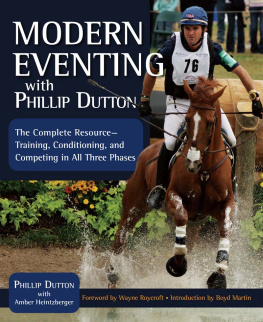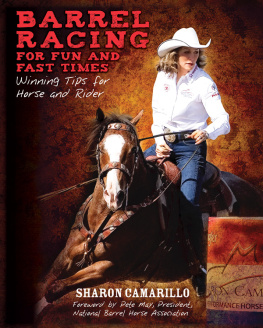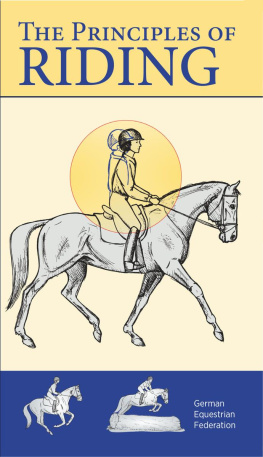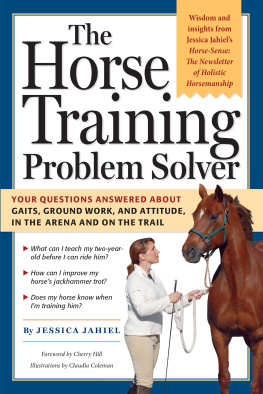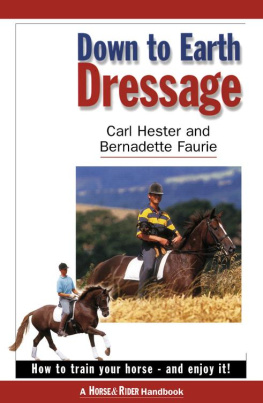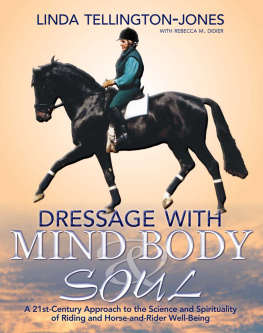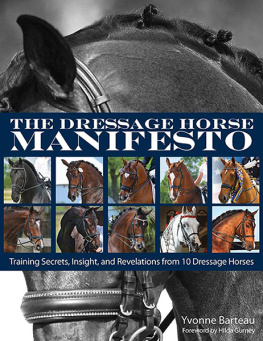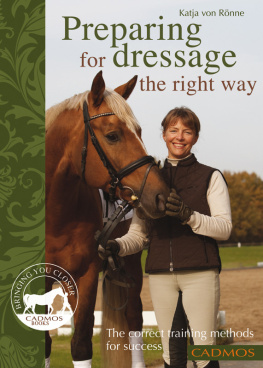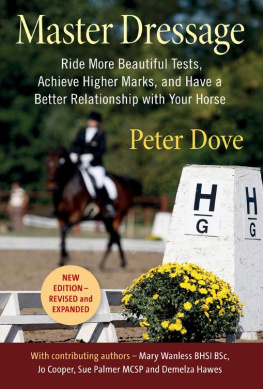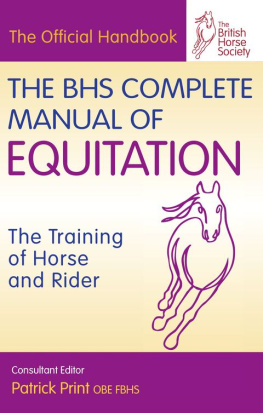James Wofford - 101 Eventing Tips: Essentials for Combined Training and Horse Trials
Here you can read online James Wofford - 101 Eventing Tips: Essentials for Combined Training and Horse Trials full text of the book (entire story) in english for free. Download pdf and epub, get meaning, cover and reviews about this ebook. year: 2006, publisher: Lyons Press, genre: Home and family. Description of the work, (preface) as well as reviews are available. Best literature library LitArk.com created for fans of good reading and offers a wide selection of genres:
Romance novel
Science fiction
Adventure
Detective
Science
History
Home and family
Prose
Art
Politics
Computer
Non-fiction
Religion
Business
Children
Humor
Choose a favorite category and find really read worthwhile books. Enjoy immersion in the world of imagination, feel the emotions of the characters or learn something new for yourself, make an fascinating discovery.

- Book:101 Eventing Tips: Essentials for Combined Training and Horse Trials
- Author:
- Publisher:Lyons Press
- Genre:
- Year:2006
- Rating:5 / 5
- Favourites:Add to favourites
- Your mark:
- 100
- 1
- 2
- 3
- 4
- 5
101 Eventing Tips: Essentials for Combined Training and Horse Trials: summary, description and annotation
We offer to read an annotation, description, summary or preface (depends on what the author of the book "101 Eventing Tips: Essentials for Combined Training and Horse Trials" wrote himself). If you haven't found the necessary information about the book — write in the comments, we will try to find it.
Three-day eventing, known as the complete competition, requires the same horse-and-rider team to ride a dressage test, a demanding cross-country obstacle course, and a show-jumping round. 101 Eventing Tips includes advice on selecting a horse, establishing horse-and-rider training programs and taking part in entry-level competitions.
James Wofford: author's other books
Who wrote 101 Eventing Tips: Essentials for Combined Training and Horse Trials? Find out the surname, the name of the author of the book and a list of all author's works by series.
101 Eventing Tips: Essentials for Combined Training and Horse Trials — read online for free the complete book (whole text) full work
Below is the text of the book, divided by pages. System saving the place of the last page read, allows you to conveniently read the book "101 Eventing Tips: Essentials for Combined Training and Horse Trials" online for free, without having to search again every time where you left off. Put a bookmark, and you can go to the page where you finished reading at any time.
Font size:
Interval:
Bookmark:
Appendix 1
Buy a small grooming kit, and keep it well stocked and clean. At a bare minimum, your kit should contain a curry comb or curry mitt, body brush with soft bristles, dandy brush with stiff bristles (never use the dandy brush above the knees because it is too stiff for your horses skin), mane comb, hoof pick, hoof dressing, fly spray for summertime, antiseptic salve for minor wounds, and a clean rub rag.
Stand your horse in cross-ties in a clean, level, well-lit place. Pick out his feet, sweep the dirt off to the side, and dispose of it. Start the grooming process on his near side with the curry comb in your left hand and the dandy brush in your right. Place the curry comb behind your horses ear, and use circular strokes to dislodge dirt, dander, and dead hair. When you use the curry comb, press your weight into it. You are trying to reach into your horses pores and dislodge any dirt that might be in there. Every ten circles draw the dandy brush across the curry comb to strip out any dirt that the curry comb has picked up. Continue this action along your horses body until you have reached the left hind leg. Switch sides, change the curry comb and dandy brush into opposite hands, and work your way down your horses off-side. By the time you have finished this part of the process, you will be a little arm weary.
Take a deep breath, move back to the near side, put the body brush in your left hand and the dandy brush in your right, and start drawing the body brush down his neck, starting behind the left ear. Again clean the body brush with the dandy brush every ten strokes. While you used a circular motion with the curry comb, you should only work with the grain of the hair when using the body brush.
Put your shoulder into the grooming stroke with the body brush. You should feel that you are mildly thumping your horse when you start the stroke with the body brush. The intensity of the stroke should vary according to the location on your horses body. You can press harder on his neck and hips than you can over his loins. This causes blood to rise to your horses skin and improves his circulatory system. It also produces healthy skin oils.
Use the body brush all the way down to the cornet band on all four legs, and then take another deep breath. You will need it, as by this time your arms will feel as if you have been working out with Muhammad Ali. Your horse is not the only one who will benefit from daily grooming; your upper body strength will improve markedly after a month of daily exercise like this. Stand in front of your horse, and carefully use the curry comb on your horses head. Repeat the process with the body brush, remembering to clean the body brush with the dandy brush on a regular basis.
Move to your horses hind end, stand to one side, and gently comb out his tail with the mane comb. Any tangles should be picked out by hand. If you a re pulling out tail hairs, you are going too fast and using too much force. A well-groomed horse has a full, clean, healthy tail that you can put your fingers into at the top and pull straight down without meeting any resistance or tangle. This will take some time with most horses, so work on this gradually.
During this process, you should have become aware of any minor cuts or scrapes and applied some antiseptic salve to the affected areas. Finish the job for the day with a coating of hoof dressing, and wipe your horse down with a clean rub rag before returning him to his stall. Remember to sweep the grooming a rea. A good horsewoman or horseman always leaves things cleaner and neater than he or she found them.
Shampoo gets dirt out of your horses coat, but it is not grooming. Grooming is the application of your very own elbow grease, applied liberally every day. A good horseman can instantly tell the difference between horses that are clean and horses that are well groomed. A horse that is being groomed daily will have a bloom on his coat that no amount of shampoo, additives, or cream rinse will supply. By a bloom, I mean the bronze tint that your horses coat will show in direct sunlight. It is easier to see a bloom on bays and browns, but palominos and grays get a bloom as well.
If you are diligent in this process, I guarantee that in thirty days you will have a new horse on your hands. Your horse will be health ier and you will be fitter, and those are both good things.
Appendix 2
Conditioning is your most important responsibility when it comes to your horse. You have a complex job ahead of you as you prepare for the three disciplines that make up an event, and conditioning will be your horses best defense against injury. However, if you concentrate solely on his physical condition, you will produce a horse that is fit, but not fit to compete. So you have to make sure your horse is ready to compete in all of the phases. Think of yourself as a juggler who has to keep four balls in the air at one time. One ball represents your horses physical fitness, another is his dressage, a third is his show jumping, and the fourth is his cross-country jumping. To be properly prepared for an event, you must take care of all four.
I train event horses using what I refer to as a rotation. By this I mean that you must rotate through the four parts just described. How are you to do this? Well, remember that training your horse is an art, not a science. So there are many ways to prepare your horse; what you read here should be regarded as an answer, and not the answer. In fact, I will give you a couple of different rotations that you can use. Each rotation will work, but you should not switch back and forth between them with out taking some time off from competing. This will allow your horse to adjust mentally and physically to the demands of the new rotation.
Any rotation should be a long-term program, should be progres sive in its demands, and should be aimed at producing your horse at a certain level of fitnessnot a continually increasing level of fitness. Particularly at the lower levels, it is equally as possible to produce your horse too fit as it is to produce him unfit. If you compete regularly, you will notice that your horse is getting fitter even though you are not increasing the amount of work that you are giving him at home. This is because the cross-country courses that you gallop over will have the effect of another gallop in your schedule. Horses hold their breath while they jump, which makes the act of jumping an anaerobic exercise, and judicious anaerobic exercise makes the horse fitter.
I think the interplay of the various parts of training is one of the more interesting aspects of training an event horse. You are training the whole horse for the whole event and not concentrating on one part of that event. Keep this in mind as you apply your rotation. Too much d ressage and not enough jumping is not the correct approach, but too much jumping and not enough dressage is not the correct answer either.
I train most of my event horses using the following four-day rotation:
Day 1dressage
Day 2show jumping
Day 3dressage
Day 4conditioning work
Day 5repeat Day 1
The most physically stressful day in the rotation is Day 4. Therefore, the following day should be the easiest day. During the work period of Day 1, I tend to concentrate on stretching and suppling exercises. If my horse is a racetrack reject, I will probably have to concentrate on calming him. Long, low, and slow is the answer for that type of horse. If my horse is lazy, I will carry a dressage whip and make sure he is in front of my leg.
Day 2 is obvious, but note that you need to plan ahead if you are taking dressage or show-jumping lessons. Make sure the lesson occurs on the correct day in the rotation.
On Day 3 I tend to practice the dressage movements required at my competitive level. I will practice parts of the dressage test but I do not run through the test in its entirety, as my horse will soon learn the pattern and start to anticipate the movements.
Next pageFont size:
Interval:
Bookmark:
Similar books «101 Eventing Tips: Essentials for Combined Training and Horse Trials»
Look at similar books to 101 Eventing Tips: Essentials for Combined Training and Horse Trials. We have selected literature similar in name and meaning in the hope of providing readers with more options to find new, interesting, not yet read works.
Discussion, reviews of the book 101 Eventing Tips: Essentials for Combined Training and Horse Trials and just readers' own opinions. Leave your comments, write what you think about the work, its meaning or the main characters. Specify what exactly you liked and what you didn't like, and why you think so.

